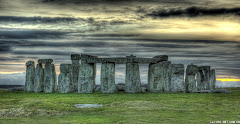
Nutritionist and author Jonny Bowden has created several lists of healthful foods people should be eating but aren’t. But some of his favorites, like purslane, guava and goji berries, aren’t always available at regular grocery stores. I asked Dr. Bowden, author of “The 150 Healthiest Foods on Earth,” to update his list with some favorite foods that are easy to find but don’t always find their way into our shopping carts. Here’s his advice.
1. Beets: Think of beets as red spinach, Dr. Bowden said, because they are a rich source of folate as well as natural red pigments that may be cancer fighters.
How to eat: Fresh, raw and grated to make a salad. Heating decreases the antioxidant power.
2. Cabbage: Loaded with nutrients like sulforaphane, a chemical said to boost cancer-fighting enzymes.
How to eat: Asian-style slaw or as a crunchy topping on burgers and sandwiches.
3. Swiss chard: A leafy green vegetable packed with carotenoids that protect aging eyes.
How to eat it: Chop and saute in olive oil.
4. Cinnamon: May help control blood sugar and cholesterol.
How to eat it: Sprinkle on coffee or oatmeal.
5. Pomegranate juice: Appears to lower blood pressure and loaded with antioxidants.
How to eat: Just drink it.
6. Dried plums: Okay, so they are really prunes, but they are packed with antioxidants.
How to eat: Wrapped in prosciutto and baked.
7. Pumpkin seeds: The most nutritious part of the pumpkin and packed with magnesium; high levels of the mineral are associated with lower risk for early death.
How to eat: Roasted as a snack, or sprinkled on salad.
8. Sardines: Dr. Bowden calls them “health food in a can.” They are high in omega-3’s, contain virtually no mercury and are loaded with calcium. They also contain iron, magnesium, phosphorus, potassium, zinc, copper and manganese as well as a full complement of B vitamins.
How to eat: Choose sardines packed in olive or sardine oil. Eat plain, mixed with salad, on toast, or mashed with dijon mustard and onions as a spread.
9. Turmeric: The “superstar of spices,” it may have anti-inflammatory and anti-cancer properties.
How to eat: Mix with scrambled eggs or in any vegetable dish.
10. Frozen blueberries: Even though freezing can degrade some of the nutrients in fruits and vegetables, frozen blueberries are available year-round and don’t spoil; associated with better memory in animal studies.
How to eat: Blended with yogurt or chocolate soy milk and sprinkled with crushed almonds.
11. Canned pumpkin: A low-calorie vegetable that is high in fiber and immune-stimulating vitamin A; fills you up on very few calories.
How to eat: Mix with a little butter, cinnamon and nutmeg.
You can find more details and recipes on the Men’s Health Web site, which published the original version of the list last year.
In my own house, I only have two of these items — pumpkin seeds, which I often roast and put on salads, and frozen blueberries, which I mix with milk, yogurt and other fruits for morning smoothies. How about you? Have any of these foods found their way into your shopping cart?








